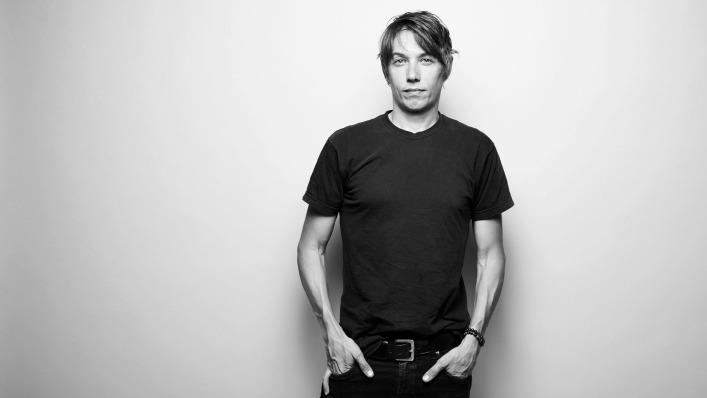Why Sean Baker’s “The Florida Project” Put Him At A Creative Crossroads
Even though Sean Baker had been steadily making films for the past 17 years, it was with 2015’s Tangerine that he was able to break past critical acclaim in indie circles and garner mainstream attention, primarily based on the fact that he shot the whole film on an iPhone 5s. What made Tangerine‘s universal praise all the more remarkable was that it was just Baker doing what he does best: extracting poignant stories from overlooked communities in a non-exploitative way while using undiscovered talent, all on the stringiest of shoestring budgets.
The newfound attention Tangerine brought put Baker in a position to secure the first A-list star he’s ever worked with for his next film–not to mention the biggest budget he’s ever been allotted. However, the lofty heights of success also put Baker on a high-wire, balancing his scrappy filmmaking sensibilities that play directly into the effectiveness of his storytelling, with the creative constraints that can accompany a larger budget and crew.
The Florida Project centers on the summer break adventures of Moonee (Brooklynn Prince), a six-year-old girl whose plucky, playfully sassy spirit is a testament to a child’s sense of wonder given the fact that Moonee and her friends are among the “hidden” homeless, a real-life community of people who aren’t necessarily living on the streets but who are in positions and financial situations that aren’t much better. Moonee and her mother Halley (Bria Vinaite) live in a ramshackle motel–ironically located just outside the glossy facade of Disney World–that’s run by the altruistic, yet clearly put upon, manager Bobby (Willem Dafoe).
The Florida Project is Baker at the height of his abilities as a director and writer, capturing such an intimate portrait that neither glamorizes nor victimizes its subjects, but rather humanizes them. That said, Baker’s preferred run-and-gun method to creating those authentic and personal moments often ran counter to his increased crew size.
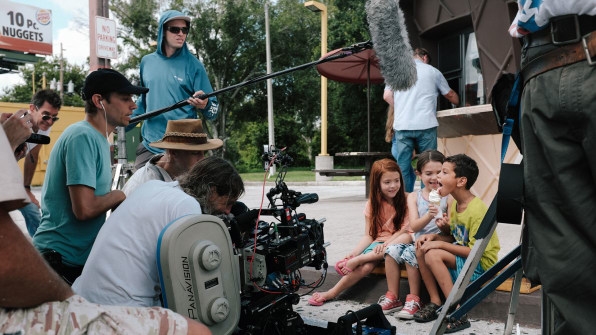
“It was a balance that we had to sort of be forceful about achieving with a union crew. Not that I don’t want to employ people–I want to employ as many people as possible, but at same time having a small footprint is also important,” Baker says. “The film had to feel intimate. It was a character piece and not plot heavy, so it was more about small moments. And to keep the authenticity of that, you really have to try to have your footprint remain as small as possible, which is hard with a 40-person crew.”
For example, there are several scenes shot clandestinely where Halley is hustling perfume in the parking lots of higher-end hotels and resorts.
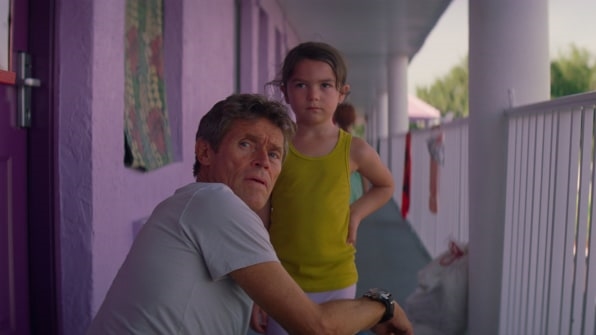
“It was hard to get exactly what I wanted. We had to go back and do it twice because the first time we were simply too big,” Baker says. “I loved working with this crew and they adapted a lot to my style, but in the future if I have to do something this intimate I may have to just shoot it with a non-union crew or outside of the country simply because it’s very difficult to achieve. It’s much harder because when you go into an environment and you’re doing a hybrid way of film making, in which you have actors being put into the real world and sometimes asked to interact with pedestrians, you have to do it with a tiny presence.”
One of the standout moments in The Florida Project came out of such a minimal presence, which, actually, had more to do with the legalities of filming in Disney World than anything else, but was effective, nonetheless.
When Halley turns to escorting to make ends meet, child protective services eventually swoops in. Chaos ensues, leading to Moonee to run away to her friend Jancey’s room in the nearby motel. In quite possibly the most emotionally deft and heart-shattering scene to come from any film this year–starring a pair of kids, no less–the tone suddenly shifts from 35mm to digital as Jancey grabs Moonee’s hand and they make a break for Disney World.
“We had always intended for that to be the ending, for them to be running away to Walt Disney World. But how we were going to do it, we weren’t quite sure,” Baker says. “It’s funny because I think that my iPhone cinematography that I’ve done on Tangerine and my short film Snowbird was smoother. But we were using a brand new iPhone with new software and we had a rolling shutter issue. So it looks slightly different, but we liked that. We liked the fact that it was jarring because it allowed the audience to think about it and say is this actually happening or not. Keeping it open for interpretation is a big thing for me.”
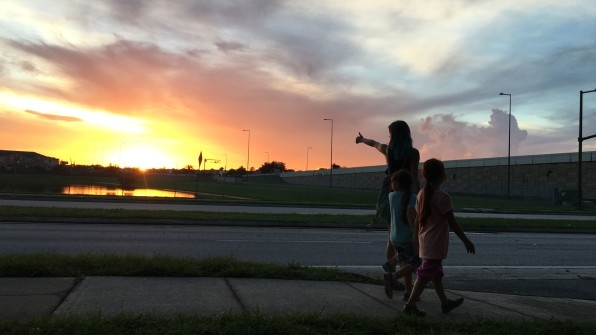
As Baker’s star as a director continues to rise, it may become easier or harder to pull off such narrative tactics. On the one hand, this push to tell the stories of unconventional characters through unconventional means is thoroughly embedded in who Baker is as a director and writer. On the other hand, a certain level of commercial appeal may be necessary with more commercial-sized budgets in the future. But that’s what makes The Florida Project such an interesting film for Baker. Despite having to forgo some of the nimbleness in production that he had become accustomed to, Baker not only got to tell the story he wanted to tell with a roomier budget, he was also able to push himself as a storyteller in a way that he hasn’t done before.
“We tried to get away from the tropes of a three-act structure with this film, where you have the twist that happens near the second act,” Baker says. “It’s still there but the way that I introduce it is is not apparent.”
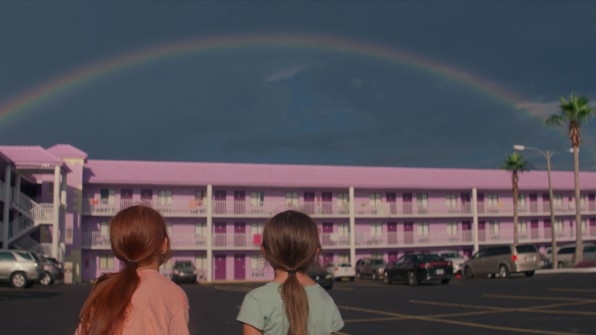
What he’s referring to is how it comes to light that Moonee’s mother falls into escorting. There’s a series of scenes where Moonee is in the tub playing with her toys while loud music can be heard from the other room. But it’s not until perhaps the third time where the audience sees what happens before Moonee gets in the tub: her mom taking a call from someone, asking what car he’s driving, giving him her room number, and telling Moonee to get ready for bed. It’s then that it all clicks into place: All those times Moonee was in the tub, her mom was right outside the door turning tricks–all of which is confirmed when Halley’s john goes to use the bathroom and finds Moonee in the tub.
“We try to do that in a way where we’re sort of disguising it. With this film, we tried to strip it away [the three-act structure] and it’s so funny because that doesn’t satisfy some people,” Baker says. “You look on Rotten Tomatoes and you get some people going ‘no story, no plot.’ Well, there is, it’s just that we wanted to remove any indication of it so it’s as if you’re just spending the summer with Moonee–that was the whole point. Others feel that it’s like a step back, but for me, I consider that progress.”
The Florida Project is in theaters now.
Fast Company , Read Full Story
(17)












